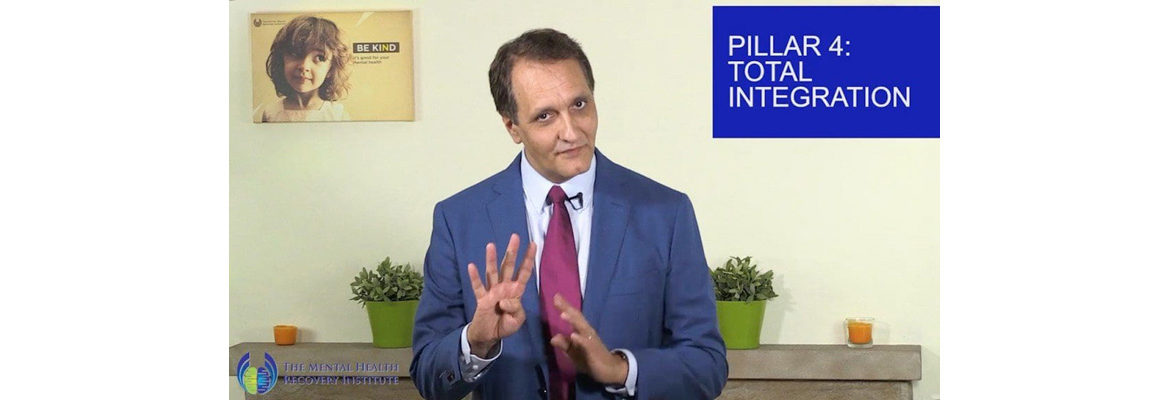First Aid for Mental Health Problems – W.A.R.M.
So you think someone you know maybe experiencing a mental health problem? Then the big question is ‘so what do I do? How do I respond now?
There’s no perfect thing that will always ‘work’ 100% of the time, because people are people, and we are all different, but there are definitely some clear principles, that are considered best practice when responding to someone who might be becoming unwell.
We’ve put together an acronym to help you remember the steps. And it’s called WARM.
It’s a reminder that as you do each of the actions in these steps, you are dealing with a person, a human, being, so be warm and friendly in your approach. Remember to use good body language and non-verbal communication that shows you really care. (If you are a manager, we encourage you to look into running a Workplace Mental Health Masterclass for Leaders in your workplace to make sure your team has the necessary skills. In the meantime, you might want to check the blog ‘How to Ask ‘R U OK?’)

Lets have a look at the WARM steps:
W stands for Watch – look for the signs and symptoms. Be observant.
It doesn’t mean that you have to be going about your day, nervously staring at everyone and looking for signs and symptoms. If you do that, you will start to think everyone has them! But it does mean to just be aware. If you see some things, and start to be concerned, don’t ignore it.
A stands for ASK – Approach the person directly. Ask them. This is the simplest, and best way to respond. By going directly to the person it avoids getting in a situation where you are talking about the person or making decisions about the person without having all the information and without them being involved. By going directly to the person, it can also help to minimise any fear or paranoia they may have bout office gossip.
So how do you ask then? (We deal with these topics more in detail in the Mental Health Essentials course)
We usually recommend, that if you are able to choose your timing, then before lunchtime tends to be a good idea. That means that after this conversation the person can have a bit of a break before they go back to work.
The conversation might not be a big in depth one, but we want to be prepared just in case it does bring things up for the person.
R stands for Refer – refer on to professional and other help. Here, it is important not to be too eager to jump in with ‘suggestions’ as to what the person should do. Remember, each person will have their own view of what is going on, and the action you think is best, may not resonate with them at all.
So again, questions are best. You can ask things like ‘have you seen anyone about this, or done anything to get some help with it?’. It is quiet possible that they are already getting some professional help.
Or you can ask them ‘what do you think we could do to get some advice with this?’. Notice the ‘we’ language, helps the person to feel like they are not all on their own with this. You’re in it together.
Or you can ask who or what has been helpful in the past? When the person identifies what they think will be useful, they are much more likely to follow through and actually seek help, than if you told them where to go.
Of course, if they really cant think of anything, then you might like to make a couple of suggestions. Make sure to give a few different options, from a few different filters. For example ‘have you thought about seeing a doctor, or a counselor, or even a life coach?’.
Your aim here is to make sure the person knows what options they have available to them, and if possible has agreed to take some steps to get help.
M stands for Monitor – Finally, the last step is Monitor. Check in with them over the next few days or weeks, and continue supporting them by being available to chat or to help with any practical assistance they may need. If they have said they will get some help, just check in and ask how it went. Keep these check-ins casual, and make sure you also talk with them about other, non mental health related things too. You don’t want all your conversations to be about mental health!
So that’s the WARM response. Easy to remember, and easy to do. As long as you follow those steps, you have gone a long way to assisting someone with a mental health problem.
It doesn’t necessarily mean they WILL get help, or that they WILL get better. But remember they are responsible for what they choose to do. You have done your part to help, and followed the best practice we have for responding to someone who may be experiencing a mental health problem. It also means that this person now knows they are not alone. This is very powerful.
If you are ready to get practical, real skills around this subject, our Mental Health Essentials course does just that over one day. Perfect for workplaces of any sort.
 Peter Diaz is the CEO of Workplace Mental Health Institute. He’s an author and accredited mental health social worker with senior management experience. Having recovered from his own experience of bipolar depression, Peter is passionate about assisting organisations to address workplace mental health issues in a compassionate yet results-focussed way. He’s also a Dad, Husband, Trekkie and Thinker.
Peter Diaz is the CEO of Workplace Mental Health Institute. He’s an author and accredited mental health social worker with senior management experience. Having recovered from his own experience of bipolar depression, Peter is passionate about assisting organisations to address workplace mental health issues in a compassionate yet results-focussed way. He’s also a Dad, Husband, Trekkie and Thinker.






 Peter Diaz is the CEO of
Peter Diaz is the CEO of 



